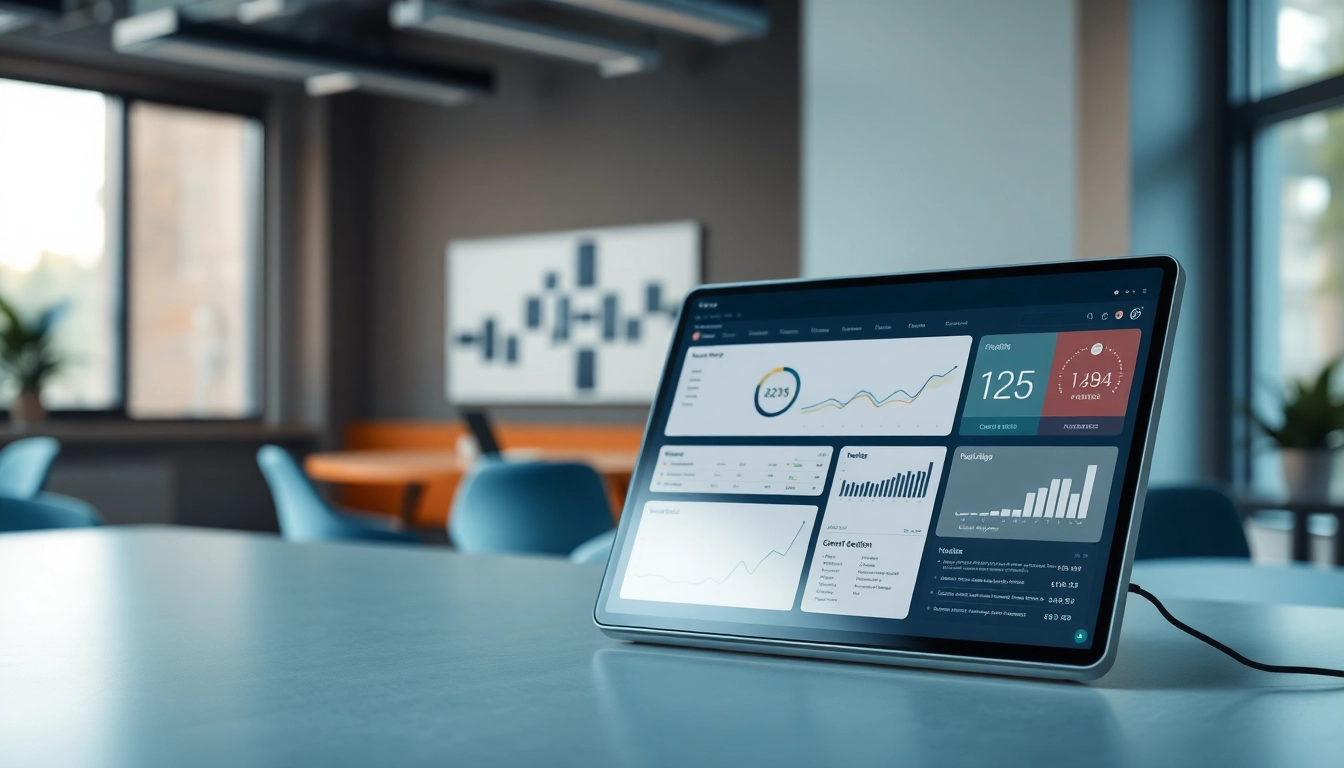Understanding Competitive Intelligence
Definition of Competitive Intelligence
Competitive intelligence is a structured process of gathering, analyzing, and interpreting information about a company’s competitors, market trends, and overall industry dynamics. Unlike espionage, which is illegal and unethical, competitive intelligence employs legal and ethical means to acquire insights that can help businesses make informed decisions. The goal is to understand not only the strengths and weaknesses of competitors but also to adopt best practices that drive organizational performance.
This practice involves defining key areas for information collection, such as never-stopping market analysis, and consumer behavior insights. As businesses operate in a fast-paced environment, effective competitive intelligence allows for proactive decision-making and strategic planning.
Importance of Competitive Intelligence
The significance of competitive intelligence cannot be overstated. In today’s market, where competition is fierce and customer preferences are continually evolving, possessing accurate and timely information sets successful companies apart. It aids in identifying market opportunities, understanding customer expectations, and predicting competitor actions, empowering businesses to maintain a competitive edge.
Additionally, competitive intelligence supports risk management. By understanding potential threats posed by competitors or shifts in market dynamics, businesses can craft strategies to mitigate these risks. The data obtained through competitive intelligence fosters informed decision-making that aligns with organizational goals, ultimately leading to improved performance and profitability.
Common Misconceptions about Competitive Intelligence
Despite its importance, competitive intelligence is often surrounded by misconceptions. One common fallacy is that competitive intelligence is synonymous with corporate espionage. Unlike espionage, which involves illegal methods to obtain confidential information, competitive intelligence operates within the bounds of legality and ethics.
Another misconception is that competitive intelligence is exclusively about competitor analysis. While understanding competitors is vital, effective competitive intelligence encompasses broader aspects, including market trends, consumer preferences, and regulatory changes that may impact business operations.
Finally, many believe that competitive intelligence is a one-time activity. In reality, it is an ongoing process that requires continuous assessment and adjustment to stay relevant in the ever-changing business landscape.
Types of Competitive Intelligence
Market and Customer Intelligence
Market and customer intelligence represent two critical dimensions of competitive intelligence. Market intelligence focuses on the broader landscape in which a company operates, including trends, opportunities, and potential threats. It involves collecting data related to market size, growth rate, and the competition’s position within it.
Customer intelligence, on the other hand, delves deep into understanding customer preferences, needs, behaviors, and dissatisfaction. By analyzing customer data, businesses can tailor their offerings to enhance customer satisfaction and loyalty. Effective customer intelligence allows organizations to identify emerging trends within their target demographics, giving them a competitive edge.
Competitor Analysis Techniques
Competitor analysis is a cornerstone of competitive intelligence, deploying various techniques to study competitor performance and strategies. One popular method is SWOT analysis, where organizations assess competitors’ strengths, weaknesses, opportunities, and threats. This framework provides a snapshot of a competitor’s strategic position in the market.
Benchmarking is another technique whereby a business compares its performance metrics against those of its top competitors. These comparisons can reveal gaps in performance and areas for improvement. Furthermore, qualitative assessments, such as reviewing competitors’ marketing strategies, product launches, and customer engagement efforts, provide insights into their operational tactics.
Product and Price Intelligence
Product intelligence entails analyzing the features, strengths, and weaknesses of a competitor’s products. Understanding what competitors are offering allows businesses to tailor their product development strategies, ensuring they provide unique value to their customers. Keeping a close watch on pricing strategies is equally essential, as price intelligence helps businesses understand their position in the market relative to their competitors.
The process of mapping pricing strategies involves monitoring not only the price points of competitor products but also promotional campaigns, discounts, and sales tactics. Gaining insights into the psychology behind competitors’ pricing can lead to strategies that resonate more effectively with customers, potentially improving market share.
Steps to Gather Competitive Intelligence
Defining Information Needs
The first step in gathering competitive intelligence involves defining the information needs of the organization. This involves clarifying what specific data is required for informed decision-making, which can vary depending on product lines, market segments, or strategic objectives. Stakeholder engagement is critical in this phase to ensure alignment with organizational goals.
Developing a focused set of questions can aid in streamlining the intelligence-gathering process. Questions may include: What are our competitors’ strengths in product development? How do consumers perceive our brand compared to our competitors? What innovations are gaining traction in our industry?
Data Collection Methods
Once the information needs are clearly defined, businesses must select appropriate data collection methods. Primary research methods, such as surveys, interviews, and focus groups, allow companies to collect firsthand insights from customers or industry experts. Secondary research involves analyzing existing data sources, including industry reports, competition analysis, and market trends from credible publications.
Online monitoring tools can also be employed to track competitors’ online activities, social media engagement, and customer reviews. These tools streamline the data collection process and provide real-time insights into competitors’ strategies and market sentiments.
Validating and Analyzing Data
Data validation is a critical step to ensure the accuracy and reliability of the gathered information. Businesses should cross-reference data obtained from multiple sources to confirm its legitimacy. This step helps to eliminate misinformation and enhances the quality of insights derived from the data.
Once validated, data analysis can take place. Utilizing statistical tools and qualitative analysis methods can turn raw data into actionable insights. Techniques such as trend analysis, sentiment analysis, and predictive modeling can be employed to convert data into strategic recommendations that drive decision-making.
Implementing Competitive Intelligence Strategies
Integrating Insights into Business Strategy
After gathering and analyzing competitive intelligence, the next step is integrating insights into the business strategy. This process requires collaboration across departments, from sales and marketing to product development and management. Ensuring that the insights inform decision-making at every level of the organization is crucial for maximizing competitive advantage.
Practically, this can involve developing strategic action plans that directly address insights gleaned from competitive intelligence. For example, if market analysis identifies a competitor’s product feature that resonates with customers, a company might decide to enhance its own product lineup accordingly.
Tools and Technologies for Competitive Intelligence
Utilizing specialized tools and technologies can enhance the effectiveness of competitive intelligence initiatives. There exists a plethora of software and platforms designed specifically for competitive analysis, data visualization, and market research. Tools such as competitive intelligence dashboards, web scraping software, and social media monitoring applications provide comprehensive insights into various market dynamics.
Collaborative tools also facilitate information sharing across teams, enhancing organizational understanding of market trends and competitor strategies. Implementing these tools ensures a systematic approach in tracking competitive activities and adapting quickly to changes in the marketplace.
Case Studies: Successful Implementations
To illustrate the effectiveness of competitive intelligence, case studies can showcase successful implementations across various industries. A technology company may have utilized competitive intelligence to identify market gaps, leading to the development of a proprietary software that enhanced user experience. This strategic move not only differentiated the company from its competitors but also increased market share.
Similarly, a retailer can employ competitive intelligence to optimize its stock levels based on competitors’ promotional strategies, leading to improved sales performance and customer satisfaction. These examples underscore the transformative power of effectively implemented competitive intelligence strategies in driving business success.
Measuring the Effectiveness of Competitive Intelligence
Key Performance Indicators for Success
Measuring the effectiveness of competitive intelligence initiatives is essential for continuous improvement. Key Performance Indicators (KPIs) specific to competitive intelligence can include metrics related to revenue growth, market share increase, customer retention rates, and the speed of decision-making processes.
Analyzing these KPIs over time can shed light on the impact of competitive intelligence on organizational performance, helping businesses fine-tune their strategies and focus areas as needed. Tracking improvements in innovation cycles and product development timelines can also provide insights into the efficiency of intelligence application.
Common Challenges and Solutions
Implementing competitive intelligence initiatives comes with challenges. One prevalent issue is the difficulty in obtaining accurate and timely data. To combat this, businesses can diversify their data sources and employ technology to automate data collection processes.
Additionally, ensuring that collected insights translate into actionable strategies can be a challenge. Fostering an organizational culture that values data-driven decision-making is fundamental. Enhancing communication between departments to streamline how competitive insights are utilized will significantly contribute to overcoming this hurdle.
Future Trends in Competitive Intelligence
The landscape of competitive intelligence is continually evolving as new technologies and methodologies emerge. One significant trend is the integration of artificial intelligence (AI) and machine learning in data analysis, which offers advanced predictive insights and automation in real-time data processing.
Moreover, the focus on ethical data collection practices is expected to gain traction as consumer awareness around privacy issues increases. Businesses will have to adapt their competitive intelligence strategies to ensure compliance while continuing to gather valuable insights.
Overall, staying attuned to these future trends will enable organizations to not only enhance their competitive intelligence efforts but also maintain a robust strategic grip on their market position.



